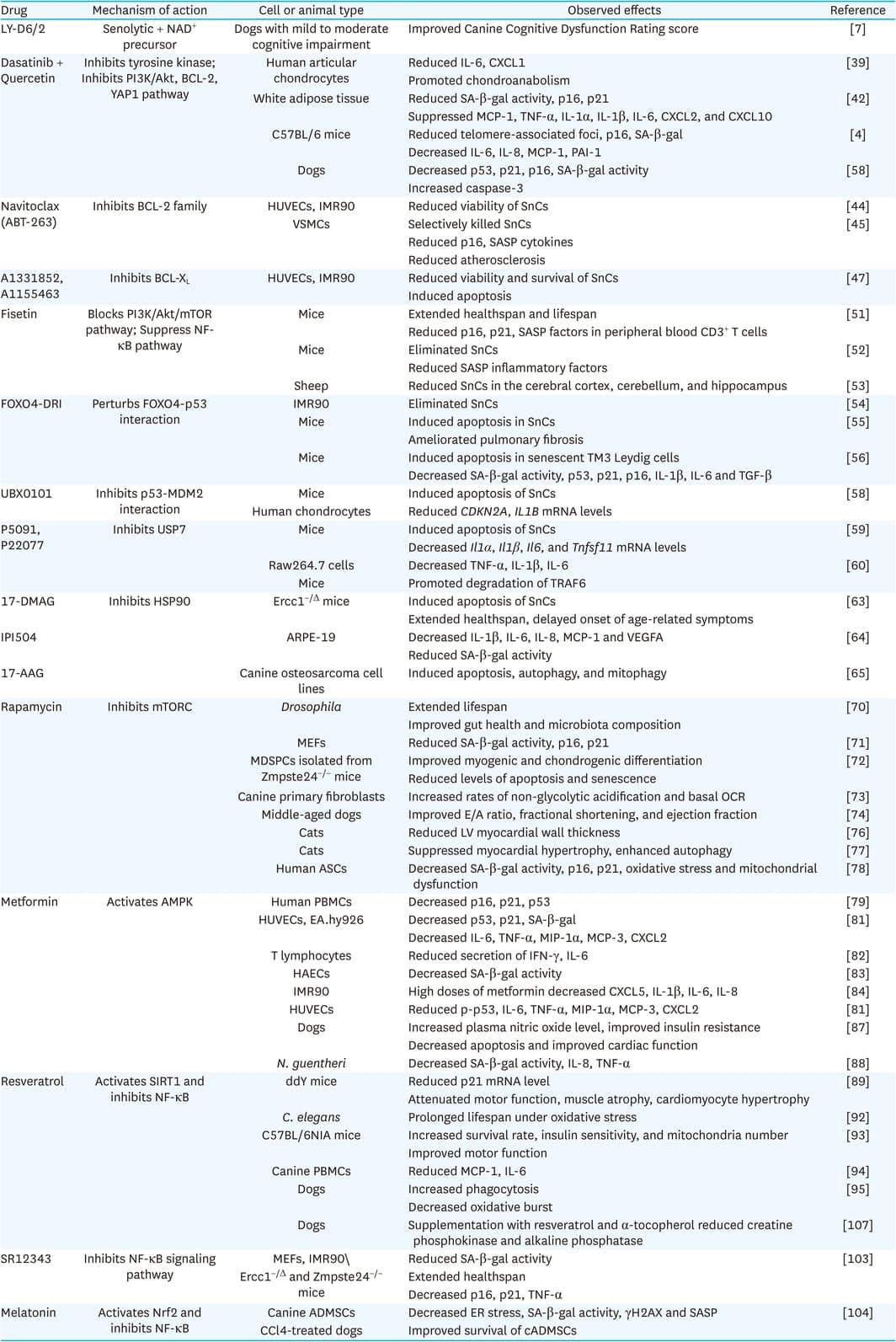This review outlines current and emerging strategies in anti-aging research for aging dogs. Progress in this field will facilitate the development of targeted interventions to prevent and manage age-related diseases. These interventions have clinical relevance in improving early diagnosis, guiding therapeutic decisions, and ultimately enhancing the quality of life of older dogs.
Rapamycin
Rapamycin is a natural macrolide that acts as an inhibitor of mechanistic target of rapamycin (mTOR) kinase, a central regulator of cell growth, proliferation, and survival. mTOR is a serine/threonine protein kinase that belongs to the phosphatidylinositol kinase-related kinase (PIKK) family and consists of two protein complexes: mTOR complex 1 (mTORC1) and mTORC2. Rapamycin primarily inhibits mTORC1 because of its high affinity to FK506-binding protein 12 (FKBP12) [67]. Rapamycin activates autophagy and extends lifespan in all model organisms studied by inhibiting mTOR [68, 69, 70]. Rapamycin suppresses SASP and SA-β-gal activity in a Nrf2-independent manner, while Nrf2 is required for some of the effects of rapamycin on senescent markers like p16 and p21 [71]. Rapamycin reverses age-related defects in muscle-derived stem/progenitor cells from progeroid mice. Senescent markers, including β-galactosidase, p16, and p21, and apoptosis were reduced after the rapamycin treatment, while the restoration capacity of stem cells and autophagy were improved [72]. Further studies are needed to determine if other rapalogs, such as everolimus, temsirolimus, and ridaforolimus, have senomorphic effects.
The rapamycin treatment has pronounced metabolic benefits, including non-glycolytic acidification and basal oxygen consumption, particularly in fibroblast cells from large-breed puppies [73]. A short-term rapamycin treatment improved the diastolic and systolic age-related measures of cardiac function in middle-aged dogs, further supporting its potential as a geroprotective intervention in companion animals [74]. A larger cohort of dogs is being studied over a more extended period to validate the effects of rapamycin. The ongoing Test of Rapamycin in Aging Dogs (TRIAD) clinical trial, a component of the DAP, is the first large-scale study to test a pharmacological intervention against biological aging in dogs [75].
Rapamycin has also emerged as a treatment for feline hypertrophic cardiomyopathy (HCM), the most common heart disease usually diagnosed in middle-aged cats. The RAPACAT trial examined the effects of once-weekly, delayed-release (DR) oral rapamycin in client-owned cats with subclinical, non-obstructive HCM over a six-month period. Cats receiving low-dose DR rapamycin exhibited significantly lower maximum left ventricular myocardial wall thickness than those that received the placebo, indicating prevention of the progression of HCM [76]. Complementing these clinical results, a pilot study examined the molecular effects of rapamycin in a naturally occurring feline HCM model based on multi-omic analyses. This study revealed dose-dependent transcriptomic changes consistent with the suppression of myocardial hypertrophy and stimulation of autophagy. Proteomic changes suggest potential anti-coagulant, cellular remodeling, and metabolic effects of the drug [77]. These molecular findings parallel observations in human studies, reinforcing rapamycin as a therapeutic agent for feline HCM.
